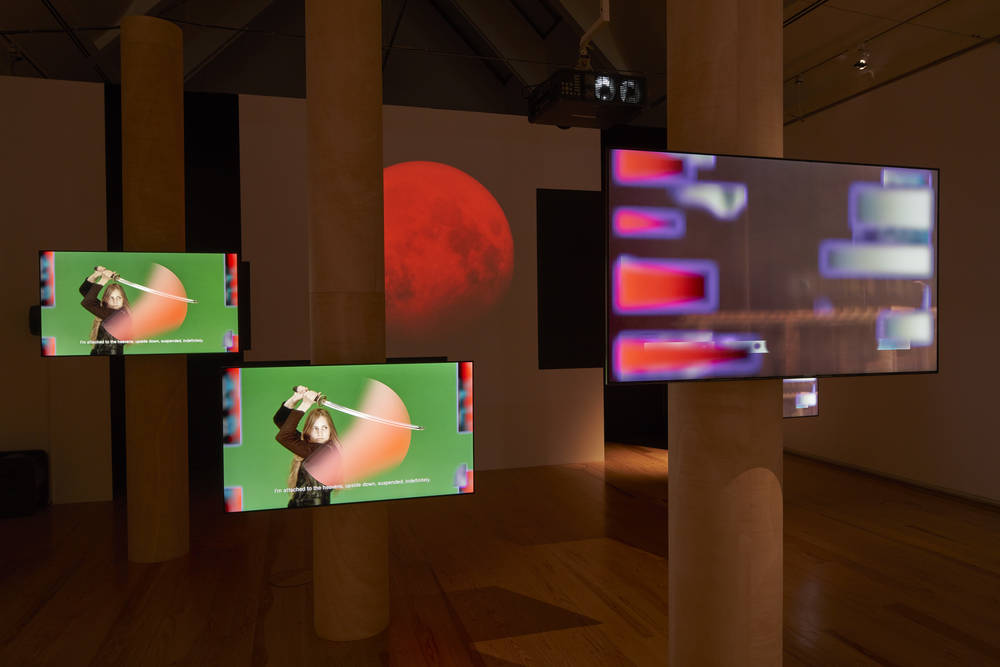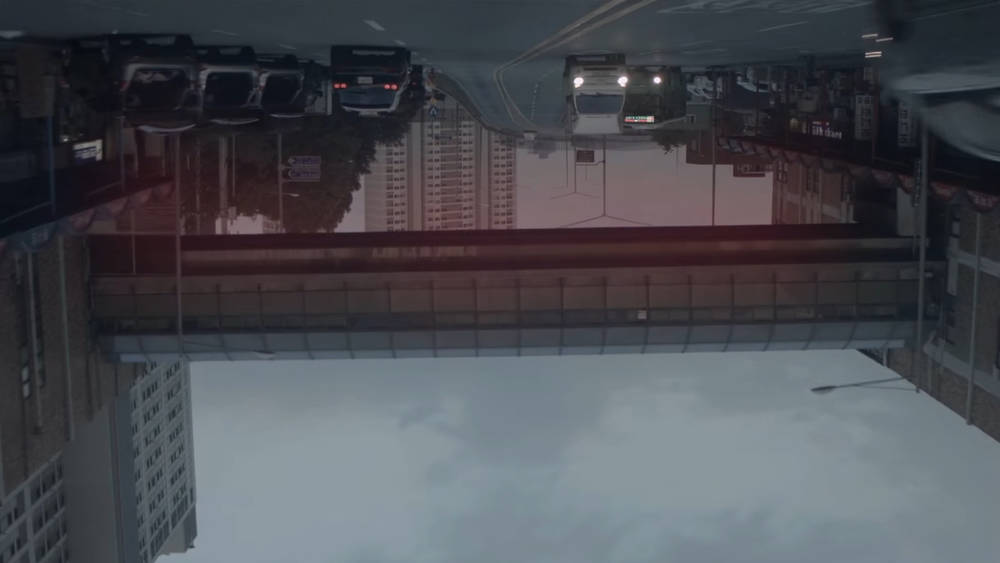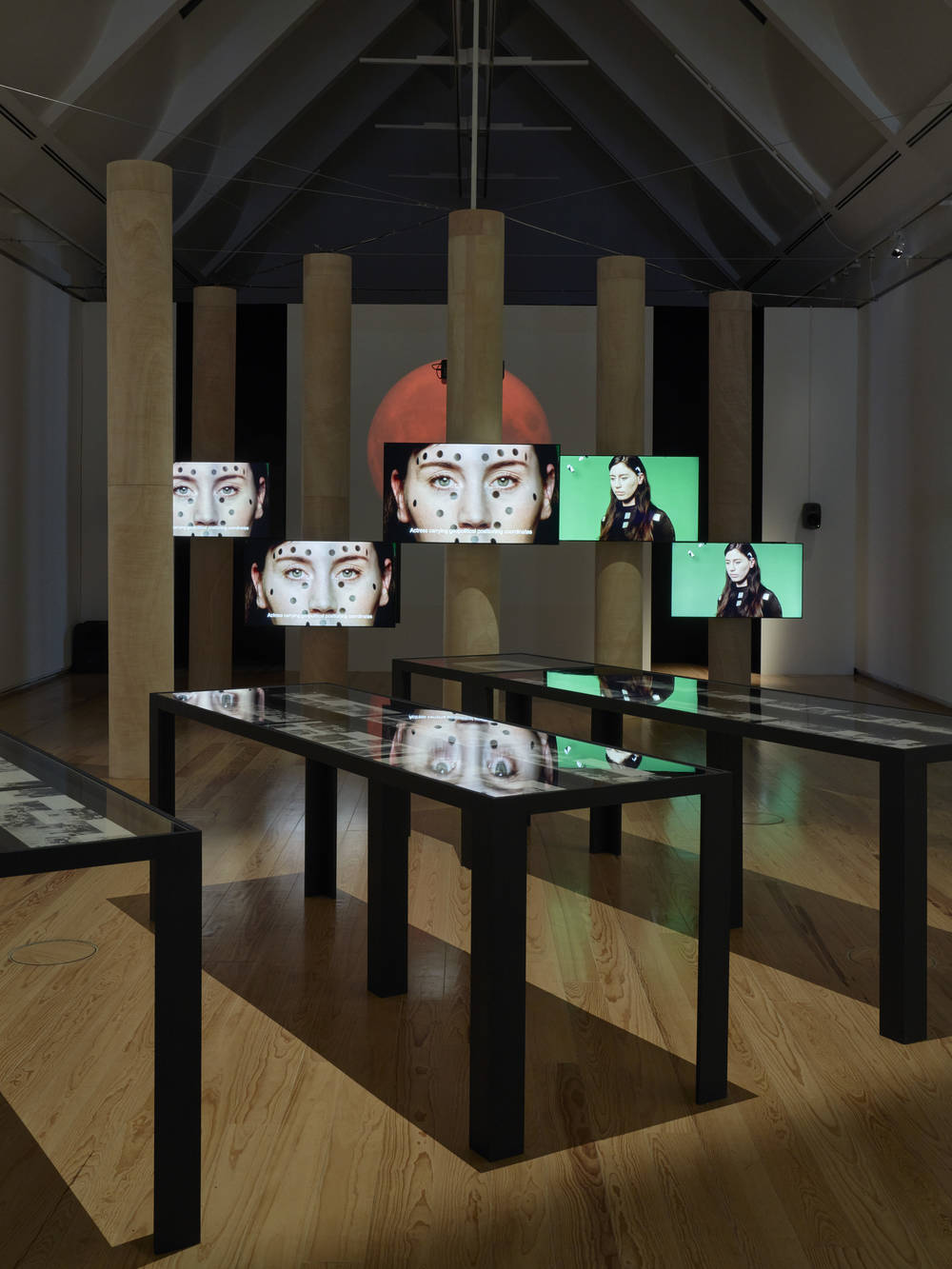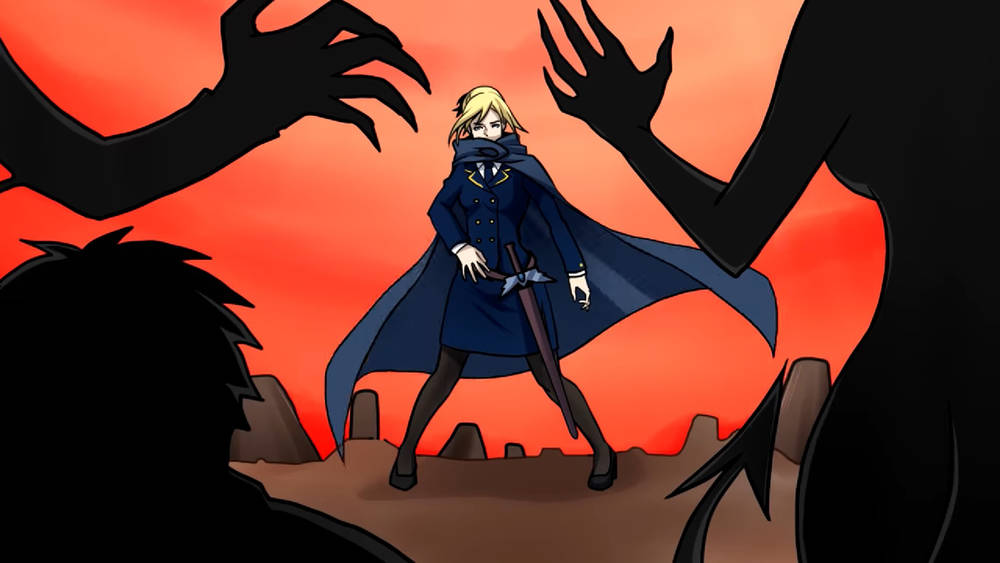This is perhaps the best way to describe the work of the artist collective Metahaven. It takes us into the depths of the Internet and the distortion of reality that comes with it.
“To sprawl” is to spread out, proliferate, extend; but it is also a combat technique in wrestling which allows opponents to be flung to the floor. How fitting that the latter meanings resonate in the title of a work produced by the collective Metahaven in 2016. “The Sprawl (Propaganda about Propaganda)” takes us deep into the sprawl of the Internet, that infrastructure of global dimensions which touches all spheres, from the political to the private. Essentially, it addresses the central importance of that infrastructure in the geopolitical contest in which an opponent’s position is undermined by creating “alternative” truths and realities.
The work does not have a definite shape. Instead, it is an assemblage of video splitters that can pop up in different constellations and guises – as a video installation spread over five screens, hanging on columns through which people can walk. On the sprawl.space website people can click on to different snippets pre-sorted using YouTube algorithms. And it also features experimental documentary films. The moving images from which “The Sprawl” has been assembled are equally diverse: YouTube videos, cell phone recordings, news programs, interviews and scenes staged by Metahaven themselves.
“The Sprawl” focuses on the events of 2014, in particular on the 2014 Ukrainian crisis. The Euromaidan protests, the deposition of the Ukrainian government, the hostilities in the east of the country, the annexation of the Crimean Peninsula by Russia, and the downing of a Malaysia Airlines flight over eastern Ukraine – the events came thick and fast in the first half of that year. However, the Ukrainian crisis can also have a symbolic meaning, representing a new kind of cyberinformation warfare, state-orchestrated disinformation campaigns which spread particularly effectively on platforms such as YouTube, Twitter and WhatsApp. It goes without saying that this phenomenon is not only Russian or state-run. In recent years the dissolution of reality has taken on increasingly extreme proportions from influencing the American election to Brexit and the spread of conspiracy theories about Covid-19. And it is becoming less and less apparent who is behind this and is benefiting from it.


A woman is sitting in front of a computer screen covered in clouds of mist in which her face is reflected. A tapped telephone conversation between the American State Department and Ukraine’s Ambassador to the United States: “Fuck the EU”. Natalia Poklonskaya, former Prosecutor General of the Crimean government, won people’s hearts as an anime figure and YouTube hit.
“There’s a steady stream of disinformation whose purpose seems to be to sort of undermine the very idea that truth is provable,” remarks journalist Peter Pomerantsev in a segment of “The Sprawl”. Falsifying facts, purposely spreading fake news, and blowing insignificant items out of all proportions (bullshitting), combined to undermine people’s wills and their ability to at least approach a verifiable answer. This type of propaganda sets little store by convincing its opponents. On the contrary, its aim is to promote a state of disorientation in which people cling all the more emotionally to the worldview produced by their own filter bubbles. Bots, troll factories and targeting perfected by algorithms dangerously fortify this development; however, at the end of the day, the system also works so well because we are constantly clicking, liking, sharing and generating content.
In the cyber-race for sovereignty of interpretation, and this is something that “The Sprawl” illustrates very clearly, what is important is not the facts themselves but to provoke emotions and to come up with independent narratives: “The effect, the spin of the information is much more important than the factual content,” explains Daniel van der Velden, who established Metahaven in 2007, together with Vinca Kruk. Images are particularly suitable for this form of spin. For one thing, we have faith in their evidentiary value, for another they have a much stronger pull on us than text; they grab our attention and address our feelings. With “The Sprawl” Metahaven performs archaeological work of a kind by turning over the layers in this digital and visual media landscape and reassembling the fragments that it has revealed into the musician Kuedo’s floating electro soundtrack.

Shots of an abandoned troll factory in Russia at night. The camera travels headlong through a town. A vlogger is surprised that a passenger airplane the size of a Boeing 777 can have disappeared from the Earth’s radar, even though we are capable of locating an iPhone.
One of these “excavated” relics leads to the lawyer Natalia Poklonskaya whose unintentional career as an Internet meme makes it clear just how tangled and opaque the web of ostensibly harmless Internet hype and multidimensional propaganda actually is. After an appearance at a press conference held by the local pro-Kremlin government, the delicate figure of Poklonskaya was honored with this particular form of anime fanart on Japanese and Russian platforms and rapidly spread internationally. Enjoykin, the Russian YouTuber, in turn used the material to mix together his own synthpop track, “Nyash Myash”. This is not only an entertaining earworm, one which, with more than 40 million clicks, went viral, it was also used as propaganda, presenting Poklonskaya as a heroine, beheading the enemies of Russia with her longsword. This “memeification” of the lawyer, which trivialized what was actually happening during the Ukraine crisis, was thus seamlessly integrated into the pro-Russian cyber propaganda.

An actor is swinging a longsword in front of a green screen: “I live in the megastructure”. Author Maryam M. Gharavi on the aestheticization of politics and the politicization of art. An IS soldier is snacking on M&M’s.
The evolution of the Internet from utopian project into an increasingly dystopian scenario is a subject of primary importance as far as Metahaven is concerned – in what kind of mechanisms concerned with the politics of truth, surveillance and manipulation does the platform mix us up? How do states and technology companies fight for sovereignty in the digital sphere? And what do we now understand by terms such as reality, autonomy and identity?
For Kruk and van der Velden, both trained graphic designers, design plays a major role in such questions. Design is about communicating and about the reduction of information, about creating identities and value added – not only for brands but also for states and organizations, for everything from IS through WikiLeaks. For Kruk and van der Velden, this means that their trade has geopolitical implications, as they explain in their pamphlet “White Night Before a Manifesto” (2008). They see their work as Metahaven as an opportunity to transform design into a speculative praxis which uses freeform constructs to come to grips with such subjects. In the process, political theory meets pop culture and aesthetics, books and essays, assemblages, installations and films are produced. In “The Sprawl” their approach fits together into a cyber futuristic trip which takes us right through the media-relevant layers of our post-factual world.

UPDATE
The SCHIRN will be closed from November 2 to 30. We'll continue to be there for you online - with exciting articles and podcasts on the SCHIRN MAG and with lots of variety on Facebook, Instagram & Co.









